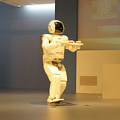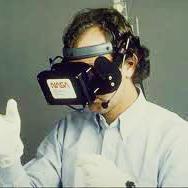For the best human-robot interaction experience, the robot's navigation policy should take into account personal preferences of the user. In this paper, we present a learning framework complemented by a perception pipeline to train a depth vision-based, personalized navigation controller from user demonstrations. Our virtual reality interface enables the demonstration of robot navigation trajectories under motion of the user for dynamic interaction scenarios. The novel perception pipeline enrolls a variational autoencoder in combination with a motion predictor. It compresses the perceived depth images to a latent state representation to enable efficient reasoning of the learning agent about the robot's dynamic environment. In a detailed analysis and ablation study, we evaluate different configurations of the perception pipeline. To further quantify the navigation controller's quality of personalization, we develop and apply a novel metric to measure preference reflection based on the Fr\'echet Distance. We discuss the robot's navigation performance in various virtual scenes and demonstrate the first personalized robot navigation controller that solely relies on depth images. A supplemental video highlighting our approach is available online.
翻译:对于人类- 机器人互动的最佳经验, 机器人的导航政策应该考虑到用户的个人偏好。 在本文中, 我们提出了一个学习框架, 辅之以一个感知管道, 以从用户演示中训练一个深视、 个性化的导航控制器。 我们的虚拟现实界面可以演示由用户在动态互动情景下操作的机器人导航轨迹。 新型感知管道将一个变异自动编码器与运动预测器结合使用。 它将感知的深度图像压缩到潜在的状态代表中, 以便能够对机器人的动态环境进行有效的推理。 在一项详细的分析和加速研究中, 我们评估了感知管道的不同配置。 为了进一步量化导航控制器的个性化质量, 我们开发并应用了一种新颖的尺度来衡量基于 Fr\' echet 距离的偏好反射。 我们在不同虚拟场讨论机器人的导航性能, 并展示第一个完全依靠深度图像的个人化机器人导航控制器。 网上有一条补充视频, 突出我们的方法。</s>




